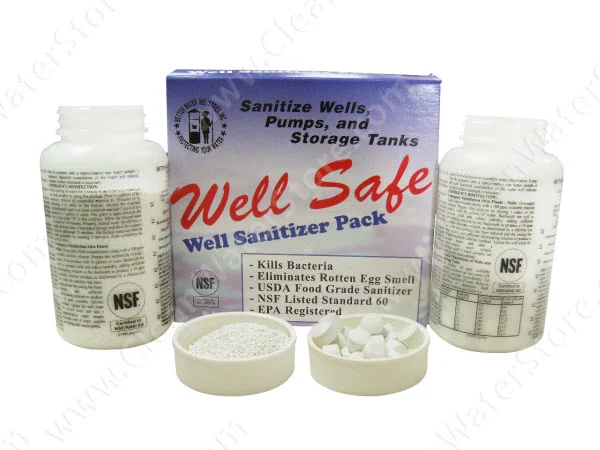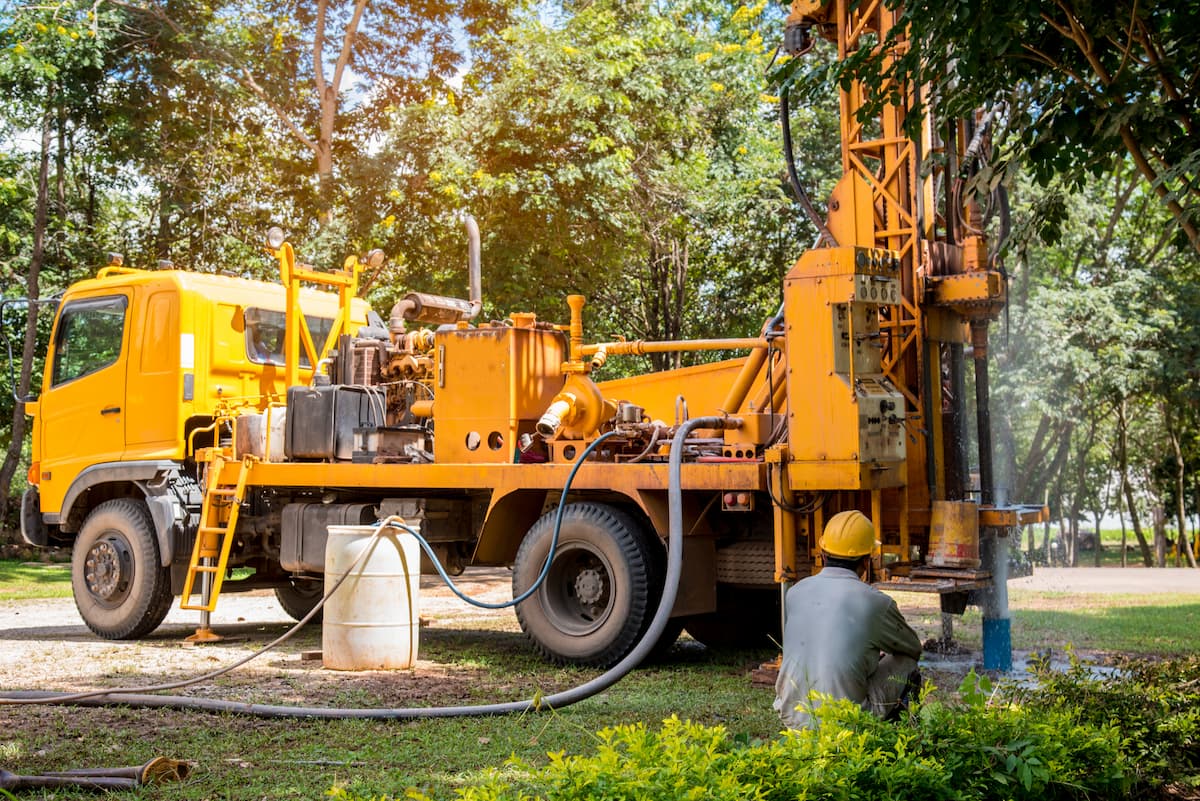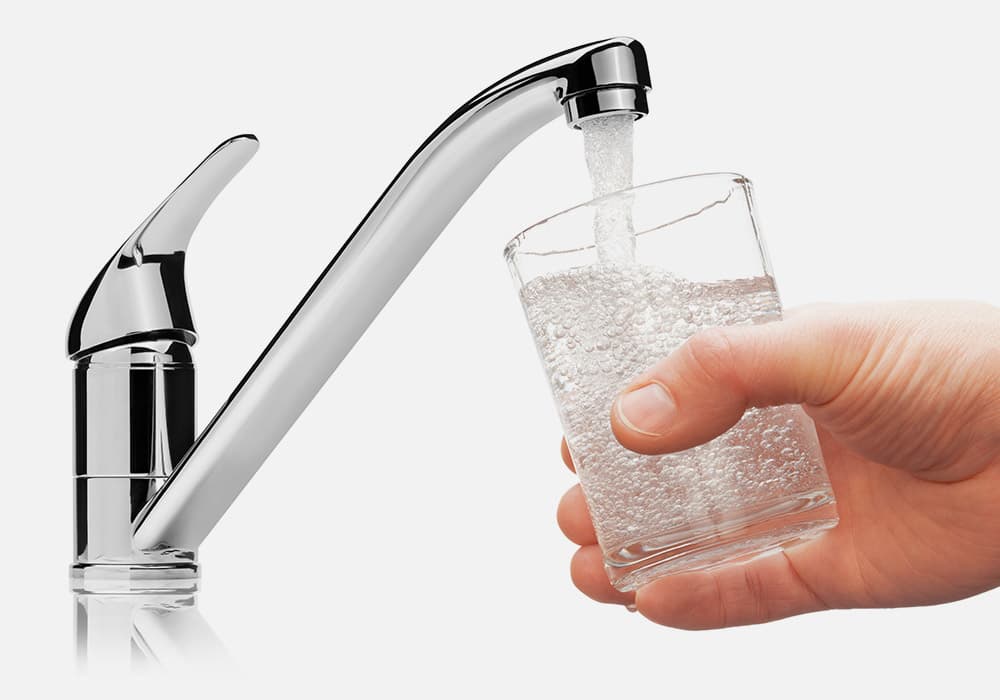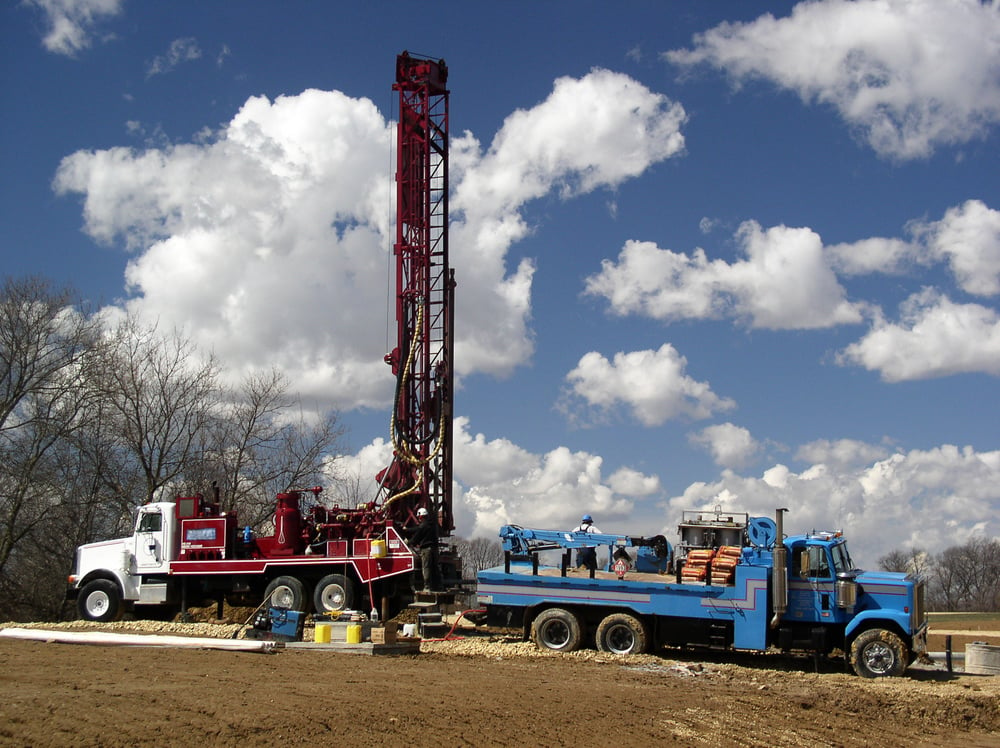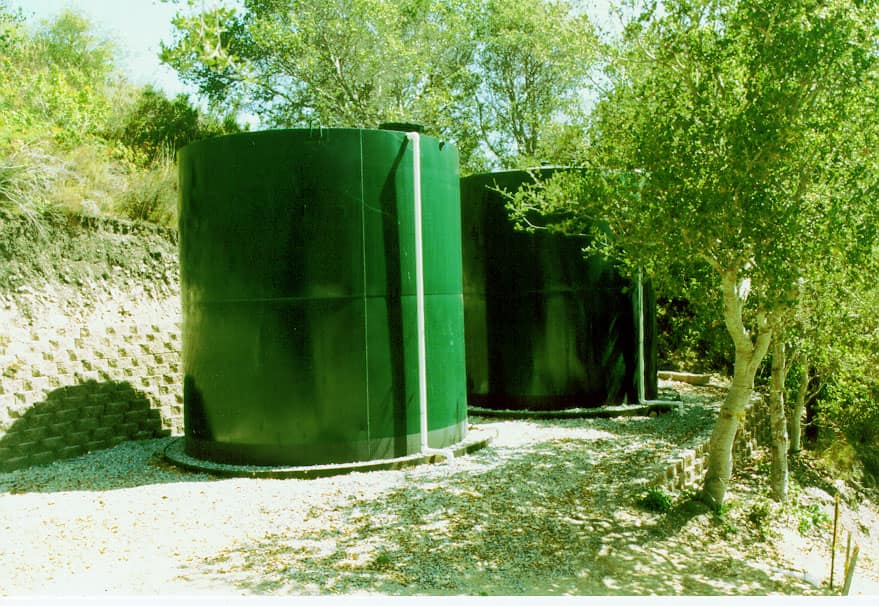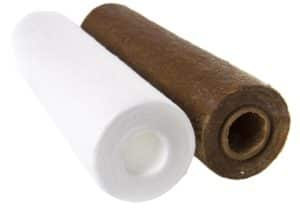How to Shock Chlorinate and Sanitize your Water Well
Podcast: Play in new window | Download
Subscribe: RSS
In this episode, I discuss how to shock chlorinate and sanitize your well with chlorine bleach. This is sometimes referred to as “shock chlorinate” because it uses a high dose of bleach to kill bacteria, eliminate odors and oxidize iron and other contaminants. I also go over why it is important to not add too much bleach, or too little bleach and other safety steps to follow.
What You’ll Hear in this Episode
1. What is shock chlorination?
2. Testing for bacteria and other contamination
3. Reasons for shock chlorinating your well
4. The Right Procedure in chlorinating your well yourself
5. Precautions to take in chlorinating your well yourself
6. What kind of chlorine to use in shock chlorinating your well
7. How to find a certified well contractor in your area
8. Why it’s important to mix and add the chlorine in a well ventilated area
9. Identifying the source of well contamination
10. When to call a professional well contractor
11. When is it safe to use the water again after chlorination
12. Benefits of shock chlorinating your well
Transcript
Hello! Thanks again for tuning in into the podcast. Gerry Bulfin here. I am a water treatment contractor, WQA- Certified Master Water Specialist. I hope you’re having a great day, everything’s going great for you and your water.
In this podcast series, I’m giving useful, easy to follow tips and information. Mostly all about well water, well water treatment systems, and how to improve the quality of your well water.
Free Download of Guide
Today’s episode we’re going to cover the basics of how to shock chlorinate and sanitize your well, and also how to sanitize pipe lines and storage tanks. I actually have a free guide for this podcast called How to Shock Chlorinate wells, pipe lines, storage tanks and systems. This is an easy to follow guide, has step by step lists of what to do, as well as very useful charts to show you how much chlorine bleach pellets or powder to add based on the size and depth of your well.
I’m offering that free to listeners in this podcast and you can get your guide by texting the word, SHOCKGUIDE, just one word to 44222 or go to cleanwaterstore.com/podcast. You can find it there. So just text the word SHOCKGUIDE to 44222 and we’ll get that going to you.
Shock Chlorination
So what is shock chlorination? Well, shock chlorination means that you’re adding sufficient bleach (which bleach is liquid sodium hypochlorite, or if it’s powdered bleach or pellets, it’s calcium hypochlorite) to raise the chlorine concentration inside the well, tank or pipe line to between 200 and 300 parts of per million. This kills bacteria and sanitizes the well. That’s the main reason. It’s also good for odors as well. But most people shock chlorinate the well to sanitize it and to kill bacteria.
The city water has maybe somewhere between .2 and 2 parts of per million of chlorine. So, shock chlorinate means you’re adding a high amount of chlorine, usually two to three hundred parts of per million. And if you leave it there long enough, it will kill the bacteria typically.
For best results the chlorine level must be maintained in your well for 6 – 12 hours and it helps if the pH is between 5 and 7. If you have a very high pH, if your pH is 8/8.5 it doesn’t work as well, it’s much less effective. So it doesn’t hurt to check the pH.
Most of the time the pH is around neutral but there are a lot of cases where the well water pH is high and then the shock chlorination is not as effective, unless you add some citric acid or something to lower the pH, but we’ll get into that in a minute.
So after 12 hours, at least 6 hours or up to 12 hours after you added the chlorine, you test it again for chlorine. If you find you have less than ten parts of per million, then you repeat the procedure. So, what happens is when you add chlorine into the water, there is a term called chlorine demand. The bacteria, the slime, the odors, and the different organic material in the water will have a demand in the chlorine and use it up. So if you find that you add chlorine to the water and you come back 6-12 hours later and you find out that you have 0 chlorine, then you got to repeat the procedure. That’s pretty unusual.
Most folks say they are getting too much chlorine, or not enough chlorine, but a lot of folks don’t even test the chlorine at all. They just to do a smell test. So, during the time that the chlorine is in the water, not only does the strong oxidant reacts suddenly with the micro-organisms and other organic matter but it also can affect rubber and plastic found in your well and storage tank components. So that’s why you don’t want to add too much. You don’t want to do damage to your well.
Most of the living organisms are killed when they come in contact with these chlorine chemicals. There also can be disinfection by-products formed such as bromates, trihalomethanes such as chloroform, and other by-products when you’re adding the chlorine. That’s why when you have to add the chlorine, you got to make sure you purge the water. You don’t use it until the well is free of chlorine and disinfection byproducts.
When should you chlorinate your well?
So, when should you shock chlorinate? Like, what’s the point? Why should you shock chlorinate? Well, many people do shock chlorinate their well when they’re selling their home. Or they are buying a home, or there is a new well they are not familiar with it. And they have tested the water and it has a coliform bacteria.
So, that’s usually the first step. They want to shock chlorinate and make sure that it’s not the well itself. It might just be some contamination caused by some work that was done in the well. So you want to shock chlorinate or sanitize your well whenever a new well has been constructed and this is almost always done by the well professional. Anytime the well is open for repair, again, the well contractor will do this.
What can happen is flood water can enter the well and that’s a disaster. You definitely need to sanitize your well and that usually requires getting a well professional to look at it too. So, if you put in a new tank, new pump or new pressure tank, or you’ve worked on the piping, say you’ve replaced the piping, it’s a good idea to sanitize that piping. Or if you have odors.
Sometimes if you have odors or slime, you can do a little shock chlorination and that can often buy you many months before the odors return, not always, but that is a good first step if you have odors. Usually people sanitize their well to kill bacteria.
Okay, so basically there are a bunch of cautions involved with this. Obviously if you could walk over to your well, see your well, the head of the well, and you see a small plastic plug on there, it’s usually plastic, might be metal. But if you see a plug on there which you can easily remove and can access the well, and if you’re careful and you follow the right procedure, then you could chlorinate the well yourself.
However, if you’re unfamiliar with it, you definitely don’t want to start dis-assembling the top of your well or working on your well. You want to have a well professional to do it. It could be a well pump contractor, or a well driller. They will offer this as a service for you to sanitize your well.
Okay, so one thing to know, shock chlorinating your well may cause your water to turn into a dark color. The chlorine may clean the well shaft, the pipe, iron and sediment. This water may be high in sludge, and cause damage to pipes or fixtures. Obviously you don’t want to run water super high in sediment or rust in your water softeners, or in your water heater.
You want to shock chlorinate the well, let it sit for 6-12 hours and then you want to flush it out into the ground. Run a outside hose bib so you don’t run heavily chlorinated water in your house and then in your septic tank either.
Procedure
So we’re going to talk about the procedure here in a minute but one question we get is, what type of bleach should we use? Well, it’s really best to try dry pellets or powdered bleach that is certified for potable water. A second really good option is to use liquid pool chlorine, which is pure sodium hypochlorite. You can hopefully find pool chlorine in the Home Depot or Lowe’s or hardware stores but pool supply companies for sure have them, and basically it’s liquid 10-12% sodium hypochlorite.
The worst option is to use household laundry bleach, Chlorox. This contains unwanted chemicals besides chlorine. So we don’t recommend that. But you can use pool chlorine and that is usually the easiest to find. You can order a kit, we sell it as well as lot of other places. It has little pellets and powder, and the powder you can mix it with water. Then you pour that down the well and you can drop a few pellets in there which will drop down hopefully below the submersible pump and chlorinate the bottom of your well. So you can use dry pellets, powdered bleach or pool chlorine.
Hydrogen peroxide, we’re often asked about, and that doesn’t work good for sanitizing the well, no point using that.
We’ll start with talking about using the dry pellets or powdered bleach because that’s kinda the easiest way to go about it. The dry pellet method, which is 70% calcium hypochlorite, can be used for wells, storage tanks or cisterns. The amount of tablets and granules used depends on the amount of water in your system. So half the total treatment will be completed with chlorine pellets, then the other half will be completed with the granular chlorine.
The kits come with pellets and powder. A 1 to 200 parts per million of chlorine concentration is ideal for sanitizing the well. If you want to be conservative, start out with a hundred parts per million. To produce a hundred parts per million, use two ounces of chlorine pellets or granules for each hundred gallons of water in the well.
If your water has a high iron or hydrogen suldife content, you might need more chlorine to get your hundred parts per million residual. So the idea is that before you do this, you want to bypass your water softener and other water treatment equipment. We recommend, if you have a well house, to clean the well house – get everything really clean, hose it out, spray it out with a little bit of bleach, and sanitize the inside and around the well house and in the pressure tank. Remove debris, hose out the deposits, and remove the small well inspection plug on top of the well.
For wells, particularly with those that have been installed with pitless adapters, there is maybe a rounded cap and you can remove the cap and if possible, measure the depth of the water in the well. That’s pretty hard to do. It’s better to refer to the table. I won’t repeat the table here but it’s in the guide. But it will tell you how much chlorine to use. There are a couple of rule of thumb but anyway, you can estimate the well and the water depth also from your well log. Usually when your well is drilled, they give you a well log. It will tell you how much and how deep the well is.
So again, caution, well caps and seals are integral to the safety and integrity of your well. Often times they are regulated by state and local codes so you have to be careful to comply with all applicable codes whenever opening your well. If you are unsure with any of these steps, seek the assistance of a qualified, licensed well driller or pump installer or contractor.
If you don’t know one handy, we recommend you going to the National Ground Water Association site, wellowner.org and you can find a certified well contractor in your area. They're easy to find and the neighbors usually can recommend one if you just moved in but you can also look in the well log.
So, mix the determined amount of granules in a clean 5 gallon bucket and then pour that solution down the well to sanitize the upper portion of the well. Then drop one tablet into the well and listen to hear if the tablet hits the water. Even if the well is 400 feet, you’ll hear a “plink”.
If you don't hear the tablet hit the water then there is no point to add pellets, it’s not going to work. There must be wire guard if there’s something preventing the pellet from entering the water. If the tablet does hit the water, which usually it would, drop the remaining determined number of sanitizing pellets needed into the well. So, this can be the same with bleach, but after you’ve added the bleach and water or the pellets to the well, then you need to circulate the water in the well.
It’s really easy to do. You just get a hose and run the water until you smell chlorine. Then run that water back down the well. Because you’ve got a half inch threaded plug on top of the well, you can take that off and you know, squirt the water back down the well. So after approximately 15 minutes of circulating the water, you should be getting the strong chlorine odor present.
If not, you could add more if it wasn’t estimated correctly. But generally at that point you’ll smell very strong chlorine. Now, after you have done that, you want to allow the sanitized water to stand in the system for at least 6 hours. But we’d prefer 10-12 hours and then open an outside faucet and flush the system until the water runs chlorine free. Repeat the flush operation of the faucet in the system.
It’s okay to run a little bit of water into the house, especially if you see the water is not dark or sludgy or full of sediment. You could run a little bit of the chlorine water into the house, it won’t kill off your septic tank but you don’t want to run a lot of heavy chlorine solution into your septic tank.
So, if your water doesn’t flow for any reason, of course that’s a disaster and don’t continue to run the pump if you don’t get a flow of water. So, after the chlorine has been left in the well and you discharge the water, you want to wait 2-3 weeks and then you want to retest for coliform bacteria.
So, it’s pretty much the same procedure with chlorine bleach. You first start up by cleaning the well house and you run the well, and determine how much chlorine you use. But you don’t want to just pour household bleach or pool chlorine or any kind of liquid chlorine straight down the well. That’s not what you’re doing. What you’re doing is you’re mixing up the estimated amount that you need in with water. And then you’re pouring 5-10 gallons of water down the well. So like for instance, say your well is 4 inches in diameter, it has a depth of 400 ft. The water level is a hundred ft. below the surface. So therefore, you have 300 ft. in the well.
In this chart that I’m seeing is you want to use 1 and a half gallons of 5%, or 3 quarters of gallon of 10% bleach. So you’d use somewhere around a half a gallon to a gallon of pool chlorine in with 5-10 gallons of water.
Generally they recommend you want to mix chlorine solution with about 10 times as much water to dilute it and then pour that down. You don’t want to pour super strong pure bleach down the well. And then again, whether you’re using pellets or liquid, you run the water until you smell the chlorine, turn it off, don’t use it, and let it sit over for 6-12 hours.
If you have a high range test kit, that’ll be the best, it’s not expensive. And then you want to test the water at the end of 6-12 hours and hopefully you still have more than 10 parts per million left. If you do, then you’re good to go.
That’s the time to flush and let the water run and then keep running until all the chlorine is gone. You can make wait to use the water in a few days, and make sure there is no chlorine left. But if you retest it and it’s below 10 parts per million, then that means there’s such a huge chlorine demand and you need to do it again.
Precautions
A question a lot of people have is what precaution should I take before I do the chlorination? Well, like I said, if you’re not familiar with your well or well construction, you might consider hiring a licensed well driller or a pump contractor. You should definitely take some precautions, concentrated chlorine can be dangerous.
Powdered bleach has 70% chlorine so it’s very important to wear eye goggles, and rubber gloves. If you get any bleach on your clothes, it’s going to ruin them, so protect yourself, your eyes in particular. Mix and add the chlorine in a well ventilated area, you don’t want to do it and get fumes inside a small area. Make sure your family and pets don’t use the water during the process. Prevent electric shock before removing the well cap or cover by turning the pump circuit breaker off. Definitely wear waterproof boots around the well.
I would never touch a panel or any kind of shut off switch unless I have some well insulated boots or standing on a board or something. You don’t want to stand in water while you reach out to turn off the circuit breaker in the well shed. So you want to exercise some caution. Before you begin again, make sure to shut off the water to carbon filters, reverse osmosis systems, bypass your softener, your iron filter.
Another question comes up, when can I use the water again? Well, generally they say, you want to flush about 4 well volumes, so for instance, a 4 inch well has 70 gallons per hundred foot of depth. So if you have 200 feet and you have 140 and 150 gallons of water in the well, 4 times that would be 600. That’s 600 gallons. That’s just in a 4 inch well. If you have a 6 inch well, those have 6 inch diameters. Those have 150 gallons per hundred feet.
So, it’s a good idea. Maybe a lot of folks don’t do it but 4 well volumes is safe because another problem that could happen is, when you chlorinate the well, it can leach out some undesirable metals levels. Arsenic metals can sometimes increase and other heavy metals can increase for a little bit. You get the chlorine byproducts by super shocking the well. And sometimes even when the chlorine is gone, those byproducts can still be there, so 4 well volumes, especially before you drink the water, is a good idea.
So that’s basically it. That does wonders. A lot of people are just so happy after they shock the well. They just can’t believe how great the water is. Sometimes the odors are gone for months, and then they come back.
Oftentimes shocking the well will get rid of the bacteria that is there because the well wasn’t properly sanitized after some work was done on it. I would say 90% of all well guys are super good at this, like they know this is a real issue in the industries’ contamination of wells because they are moving their rigs from one site to the next so they take great pains to sanitize their drilling, rig, and their tools.
Maybe bacteria from another well is contaminating your well and you don’t even know. It could be spread around. So if you come up with a test positive for coliform and you had your well worked obviously that could be the cause of it. But if you sanitized that once, wait several weeks, or a month or two later, retest it and it’s gone, you might want to test it again a month or two later just to make sure. But usually you got rid of it.
In other words, your well is contaminated with something from the surface. Either the well is getting worked on, or maybe the well cap was loosed and some critters got down in there, and insects can cause a positive coliform. So you got a situation where you can clean it up just by sanitizing it.
However, which is really common, people sanitize the well to get rid of the odor or they sanitize to get rid of coliform bacteria, they retest it and it’s fine. They test it another month later back, and it's back. Then you got an actual contamination problem, and you got to figure out what’s the source. Why is that well becoming a positive for coliform bacteria, it’s coming somewhere from the ground since the seal is okay and everything on top is fine. Then you know that it is coming from something. Maybe it’s too close to a septic tank or there is something going on.
I keep saying this but it is a good idea to call a well contractor, well driller, well professional, get help with this sort of thing. But we have many, many people that sanitize their well, no problem. It can be done. You can do it yourself but if you have any qualms about it or you think you can’t and you’re not sure about it, then you shouldn’t do it. And also if you will go over to it and you don’t have an easy way to access it and if you got to disassemble the top of the well to get to it, then that’s the sign you shouldn’t be doing it. Okay, well I hope that was helpful.
Again, if you want to get the guide which actually is a lot easier to follow than me talking about it but still hope that was helpful. Just go to our website cleanwaterstore.com/podcast and look for this episode number 7 or if you’re on mobile and just want to do it easily, just text 44222 and text the word SHOCKGUIDE to 44222 and you’ll automatically we’ll get going to you. Saves you a lot of money, get rid of odors, bacteria, iron, and you don’t even have to have chlorine in your house. You can easily filter it out. We’re going to de-mystify that and go over chlorinators. Till then. Have a great week.
Have a Storage Tank? Learn How Much Chlorine To Add to Storage Tanks to Kill Bacteria



